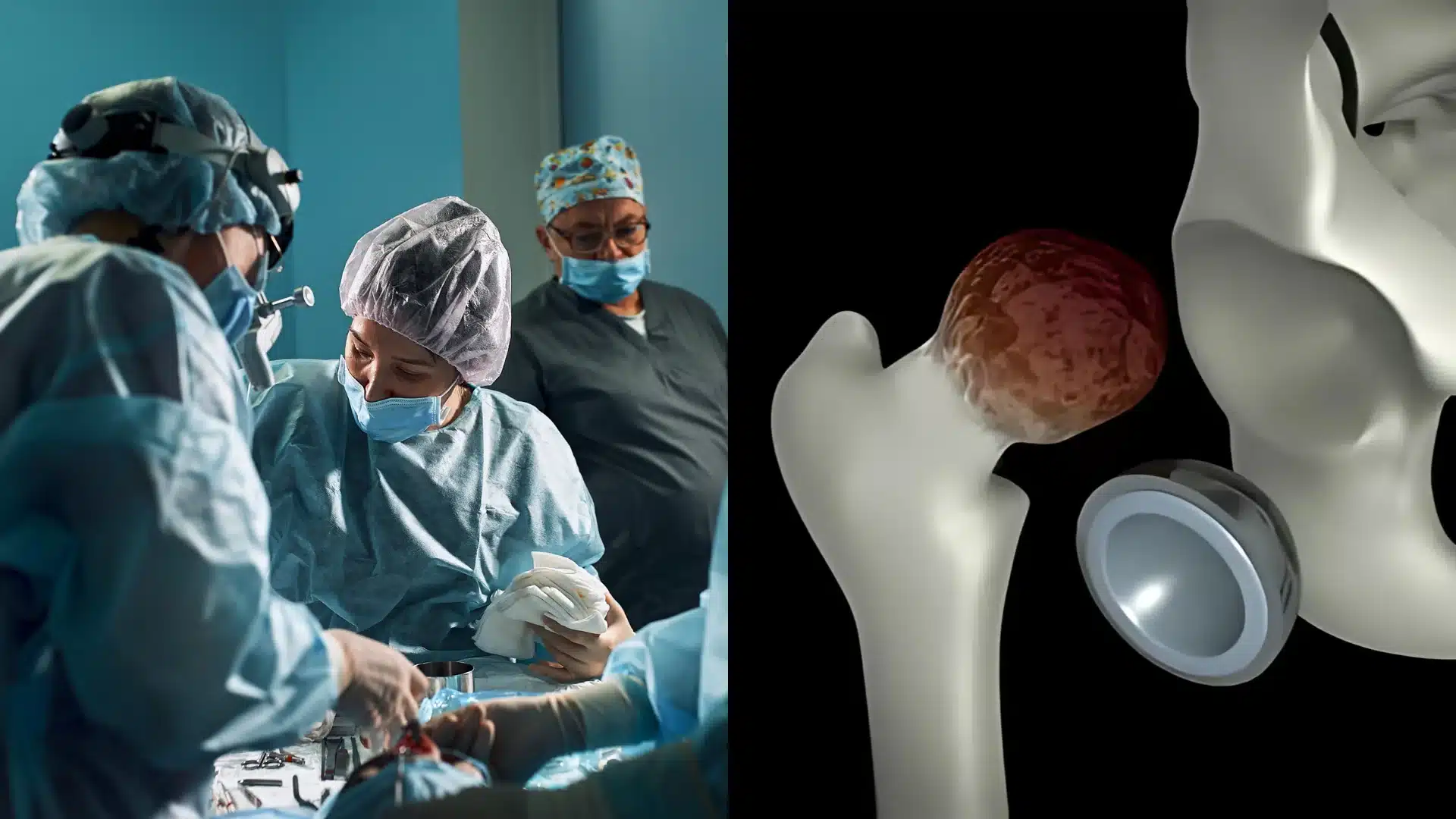Hip Resurfacing: What It Is, Benefits & Risks

Overview
Hip resurfacing is a surgical option to consider as an alternative to traditional hip replacement surgery by removing damaged surfaces of the joint and covering them with metal prostheses. This procedure may be particularly suitable for younger and more active patients looking to maintain an active lifestyle after their procedure.
What is Hip Resurfacing?
Hip resurfacing is a type of surgery where only the damaged parts of the hip joints are replaced. Unlike a full hip replacement, where the entire ball of the hip joint is removed, hip resurfacing leaves more of the natural bone intact.
The femoral head (the ball of the hip joint) is trimmed and covered with a metal cap, while the acetabulum (the socket) is fitted with a metal cup. It helps preserve bone structure, which is important for younger patients who may need further surgeries later in life.
Why It Is Done
Hip resurfacing is recommended for people who have hip arthritis or other joint conditions that cause pain, stiffness, and loss of movement. It is typically used for patients aged 50 to 65 years who are in good health and lead an active lifestyle. A more appropriate treatment for these patients would be regenerative therapy.
The purpose of the surgery is to alleviate pain, enhance mobility, and help the patient resume daily activities, including sports.
Benefits
Preserve Bone
Since only the damaged parts of the hip joint are replaced, hip resurfacing keeps more of the natural bone intact. It is important for younger patients who may need future surgeries.
Faster Recovery
Compared to traditional hip replacement, patients who undergo hip resurfacing may experience a quicker recovery. They may be able to return to normal activities sooner.
Increased Mobility
The metal components used in hip resurfacing provide a smoother joint surface, which may lead to better movement and less friction.
Better for Active Lifestyles
Hip resurfacing is a good option for younger, more active individuals. It allows for a return to higher-impact activities, like running or playing sports, which might be difficult after a traditional hip replacement.
Not everyone with hip problems is suitable for hip resurfacing. The procedure is generally recommended for people who:
- Are under 65 years old
- Are in good overall health
- Have relatively strong and healthy bones

Risks and Challenges
Hip resurfacing, like any surgery, comes with certain risks. Here are some of the most common ones:
- Infection: There’s a chance that bacteria could enter the body during surgery, leading to an infection. This could cause pain, swelling, or fever.
- Blood clots: After surgery, blood clots can form in the veins, especially in the legs. These clots can travel to the lungs, which is very serious. Doctors usually give medication or suggest movement to reduce this risk.
- Hip dislocation: After the procedure, there is a chance the new hip joint could slip out of place, causing pain or needing another surgery to fix it.
- Hip fracture: The bone around the new joint can break, especially if the person falls or puts too much pressure on it in the early stages after surgery.
- Metal sensitivity: Some people may have an allergic reaction to the metal used in the hip implant. This can cause pain, swelling, or rashes.
It’s very important to talk to your doctor about these risks. Understanding them will help you make a more informed decision about whether this surgery is the right choice for you.
Takeaways
Hip resurfacing is a viable surgical choice for individuals with hip joint issues, particularly younger patients who wish to preserve an active lifestyle. It aims to preserve more natural bone while using modern materials for improved pain reduction and mobility enhancement. If you are considering hip resurfacing surgery, consult experienced surgeons to understand potential benefits and risks in your particular case.
FAQs About Hip Resurfacing
What is the difference between hip resurfacing and hip replacement?
The main difference is that in hip resurfacing, only the damaged surfaces of the hip joint are replaced with metal caps and cups, while a full hip replacement involves removing the entire ball of the hip joint. Hip resurfacing helps preserve more of the natural bone, making it a preferred option for younger and more active patients.
Who is a good candidate for hip resurfacing in India?
Ideal candidates for hip resurfacing are people aged 50 to 65 with hip arthritis or other joint issues causing pain and loss of mobility. It’s especially beneficial for patients with healthy bones who lead an active lifestyle. Younger individuals in India who wish to return to sports or high-impact activities may find hip resurfacing a better option than traditional hip replacement.
How long does the recovery take after hip resurfacing?
The recovery period varies from person to person. However, many patients experience a faster recovery than those undergoing traditional hip replacement. Most people can return to normal activities within a few weeks to months, but high-impact activities like running may take several months to resume safely.
What is the cost of hip resurfacing surgery in India?
Prices can vary depending on the hospital, the surgeon’s expertise, and the city where the surgery is performed. It varies from Rs.1.5 Lakh to Rs. 5 Lakh or more. It is recommended to consult with the hospital for an accurate estimate.
Is there any special care required after hip resurfacing surgery?
Patients are advised to follow specific rehabilitation exercises to regain strength and mobility. Physical therapy is often a key part of the recovery process. Patients should also avoid high-impact activities early on and follow their surgeon’s advice for a safe recovery.
